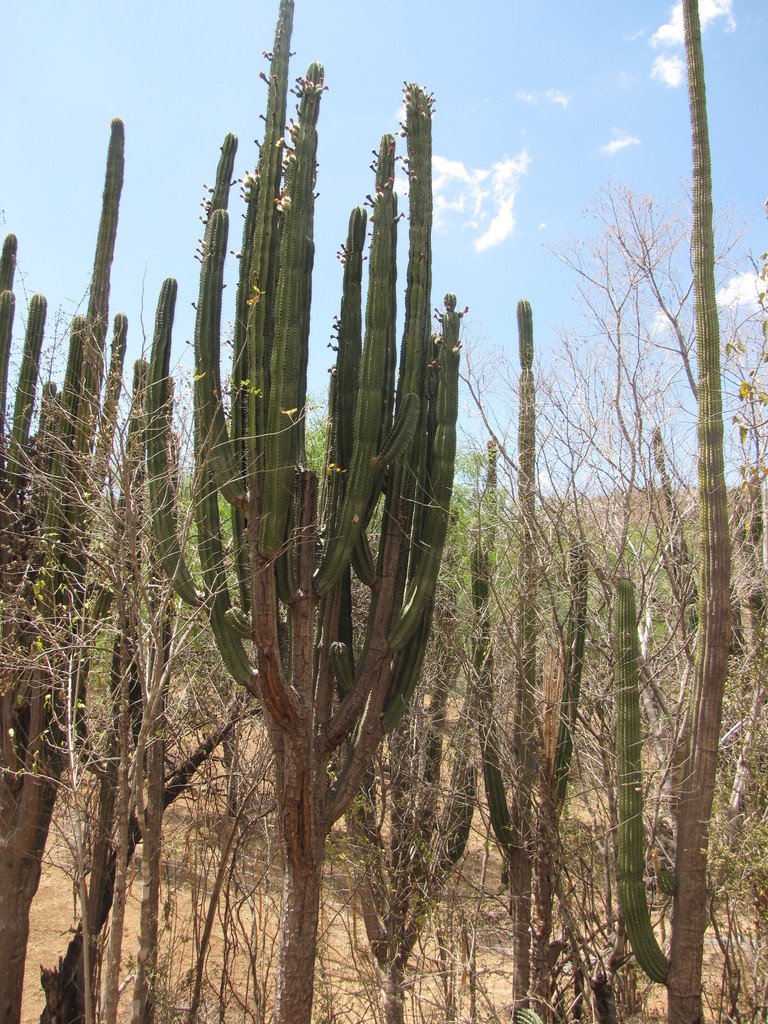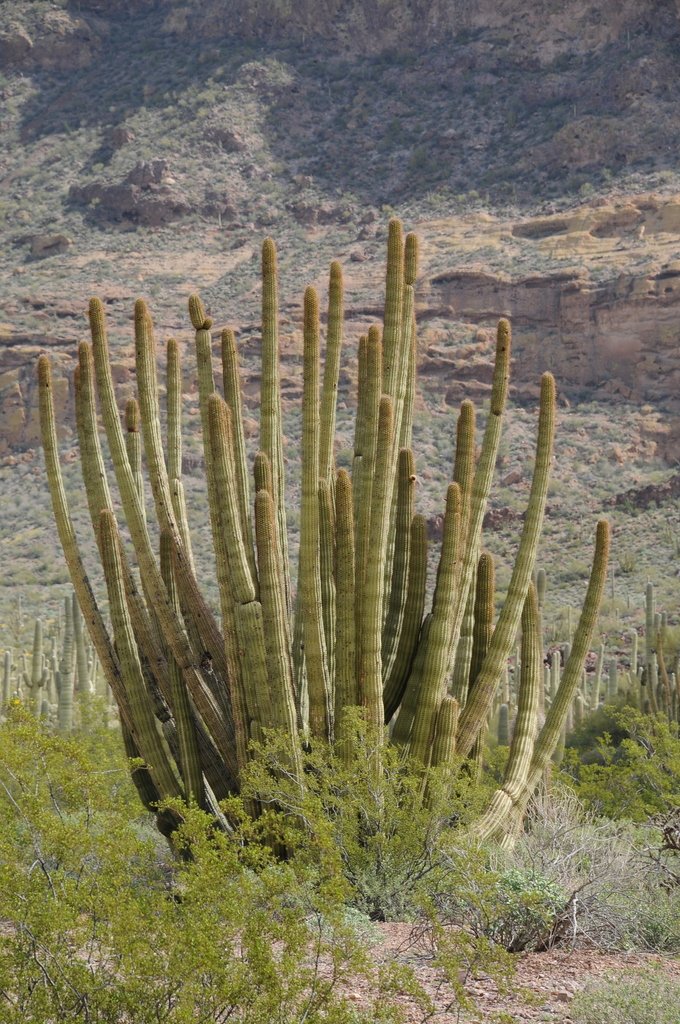The Columnar Cacti
Columnar cacti are dramatic plants that botanists will generally refer to as “cereoid”, which is an acknowledgment of their relatedness. In the wild, columnar cacti occur all over the Americas, from North America to South America, but only a few large columnar cacti occur in the United States—in Arizona, that would be the famous saguaro (Carnegia gigantea), the senita (Lophocereus schottii), and the organ pipe cactus (Stenocereus thurberi). Cold temperatures are what limit the distribution of these columnar cacti.
There are a few smaller cereoid cacti like a few species of night blooming cereus (Peniocereus spp) and the genus Echinocereus (hedghog cactus) which are basically miniature columnar cacti. All these smaller columnar cacti we group into another section of this webpage. This section of our website is dedicated to the larger columnar cacti.
Though there are only a few large columnar cacti that occur naturally the United States, many are cold-hardy enough to grow here.
Almost all of these plants can tolerate full sun. Most will be somewhat limited by how cold your particular region is. Some of these species will need to be covered on the cold nights. Many people will use styrofoam cups to cover the tips of plants, as the younger, more tender growing tips of columnar cacti are more frost tender than the older parts of the stems. Many people also utilize protective microclimates, such as south-facing walls, where they will place some of these more frost tender plants. Most of these cacti are also low-water using. A good, deep watering once or twice a month in summers will keep plants healthy when rains have not been sufficient. You generally don’t need to feed cacti, but if you feed them, avoid high-nitrogen fertilizers, as they are not good for cacti. Usually allowing some organic debris to occur around plants will provide enough nutrition for these undemanding plants.
The tall columnar cacti are great for wildlife. Many of them have very nectar-rich flowers. Though not always, they are often nocturnal and pollinated by bats or moths, though many diurnal organisms (like hummingbirds and bees) will take advantage of the nectar source. Some columnar cacti prefer diurnal organisms as pollinators. Most columnar cacti produce fruits that are edible to people, animals, and insects. Many are used by birds as safe perching sites where they can scope the landscape for food, prey, or predators. A few birds nest on (or inside) these large plants.

Saguaro (Carnegiea gigantea)

Old Man Cactus (Cephalocereus senilis)

Brazilian Apple Cactus (Cereus jamacaru)

Glass-Spined Silver Torch (Cleistocactus hyalacanthus)

Silver Torch Cactus (Cleistocactus strausii)

Bushy Bottom Cactus (Espostoa blossfeldiorum)

Cottonball Cactus (Espostoa lanata)

Peruvian Old Lady (Espostoa melanostele)

Argentine Saguaro (Leucostele terscheckii)

Mexican Fence Post Cactus (Lophocereus marginatus)

Senita Cactus (Lophocereus schottii)

Old Man of the Andes (Oreocereus celsianus)

Etcho (Pachycereus pecten-aboriginum)

Mexican Gian Cardoon (Pachycereus pringlei)

Facheiro Azul (Pilocereus pachycladus)

Mexican Organ Pipe (Stenocereus griseus)

Sahuira (Stenocereus montanus)

Organ Pipe Cactus (Stenocereus thurberi)

Toothpick Cactus (Stetsonia coryne)


